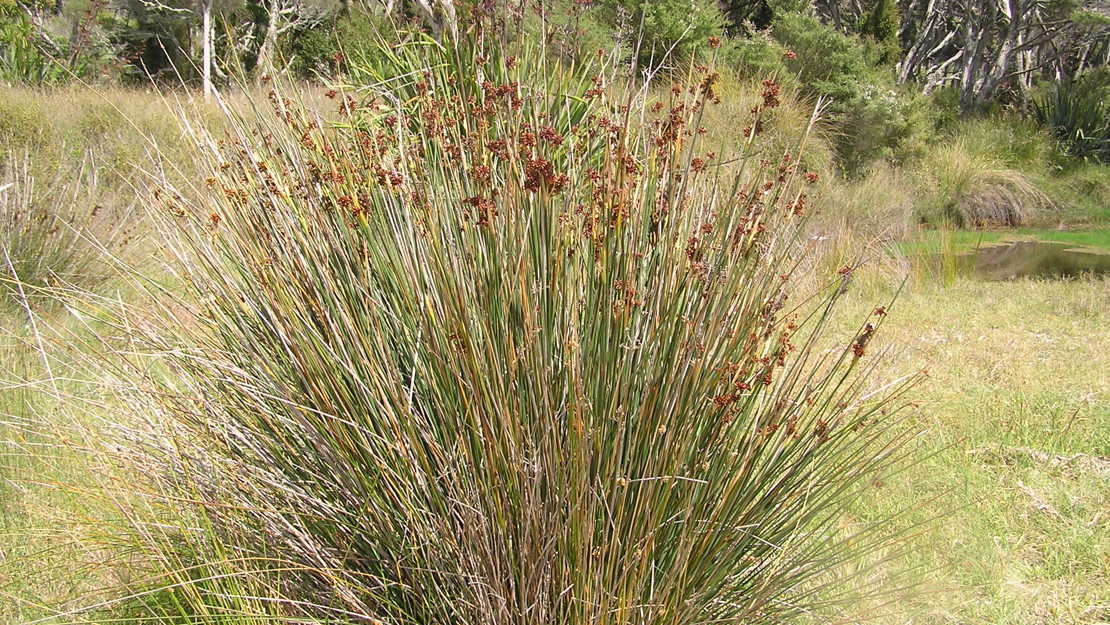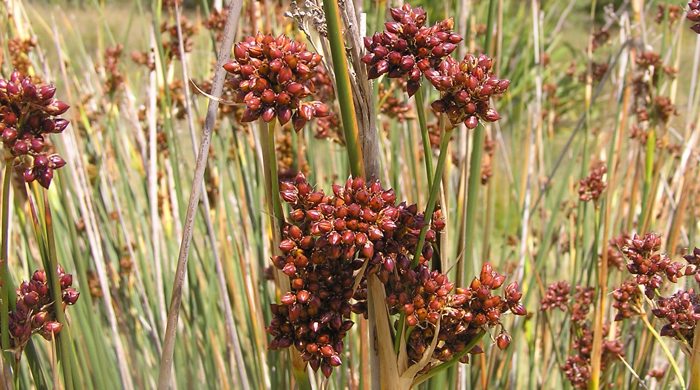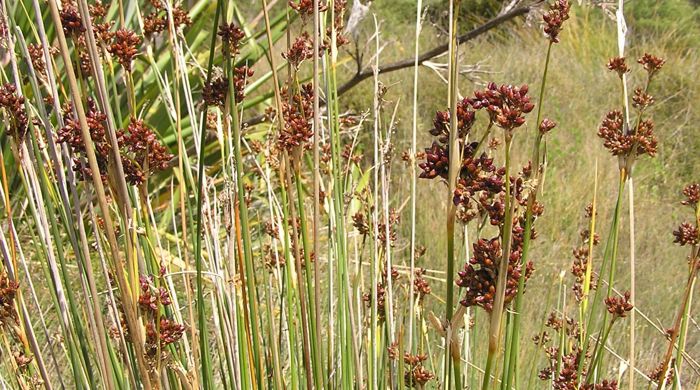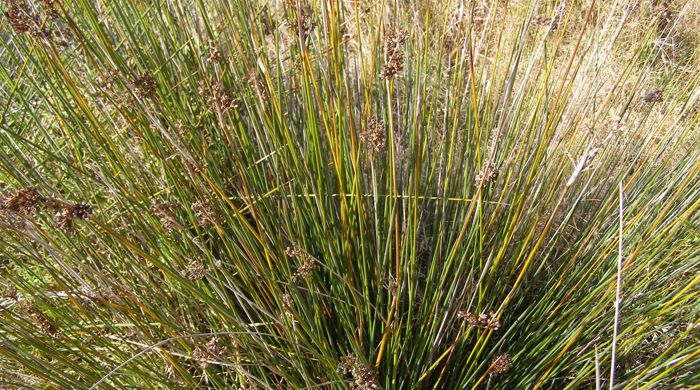Juncus acutus
Sharp rush
Family: Juncaceae
Origin: Africa, Europe, North America

Regional Pest Management Plan (RPMP) status
- Whole region — Sustained control
- Parkland with Significant Ecological Areas — Site-led (on-park only)
- Aotea — Exclusion
- Waitākere Ranges Heritage Area priority status
- Hauraki Gulf Controlled Area Notice pest
General description
Perennial, spiny, clump-forming rush < 1 m high. Rhizomes are woody. Stems are cylindrical and sharp-tipped. Leaves have sharp tip. Flowerheads are clumped, green/brown and borne near the end of each stem in summer. Fruit capsules are red/brown/orange and borne in autumn.
What you need to know
To help protect our environment, from 1 September 2021:
- You must not breed, distribute, release or sell sharp rush on Aotea/Great Barrier Island group.
- You must not plant sharp rush on Aotea/Great Barrier Island group.
After the RPMP has been operational for one year, you:
- will not be allowed to breed, distribute, release or sell sharp rush within the Auckland region.
- will not be allowed to plant sharp rush within the Auckland region, unless you are transferring an existing plant on your land to another location within the boundaries of the same property.
- must destroy any sharp rush on land that you occupy if it has been planted in breach of the above rules and you are directed to do so by an authorised person.
If you see sharp rush on Aotea/Great Barrier Island group, please report it to Auckland Council at pestfree@aucklandcouncil.govt.nz.
Habitats
Salt marshes, mudflats, wetlands, damp scrub, lake margins, pasture, roadsides.
Dispersal
Seeds dispersed by water and soil movement. Vegetative spread from rhizomes. Human-mediated dispersal through movement of contaminated machinery and soil.
Impact on environment
Forms dense stands, displacing native salt marsh vegetation and suppressing recruitment. Reduces native plant richness and alters invertebrate communities.
Control
Site Management
Follow up treated areas three times per year. Encourage natural regeneration of native plants or replant treated areas where possible after 2-3 treatments to establish dense ground cover and minimise reinvasion.
Recommended approaches
Do not attempt to undertake control of this species on Aotea/Great Barrier Island group. Please report to Auckland Council if seen on Aotea/Great Barrier Island group.
Physical control
Method: Dig out.
Plant parts requiring disposal: Seeds and rhizomes.
Disposal options: Remove to greenwaste or landfill.
Biocontrol
Biocontrol is currently not available for this species.
Community agrichemical control recommendations
No qualifications: Foliar spray with 100ml glyphosate green per 10L of water in spring and summer.
Certified Handler/Experienced agrichemical user: Foliar spray with 100ml glyphosate green per 10L of water and 20ml penetrant in spring and summer.
Caution: When using any herbicide or pesticide please read the label thoroughly to ensure that all instructions and safety requirements are followed.






